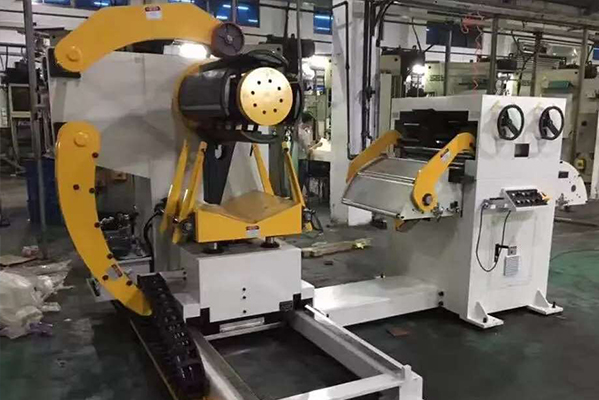Navigation Menu
Contact Us
- Email:
- info@wxavatar.com
- Address:
- Yurong Village, Yuqi Street, Huishan District, Wuxi, China.
Release Date:Apr 03, 2025 Visit:47 Source:Roll Forming Machine Factory
Roll forming is a highly efficient and precise metal forming process that has revolutionized modern manufacturing across various industries. This continuous bending operation transforms flat metal sheets or coils into complex cross-sectional profiles with consistent quality and high production rates. Understanding the working principle of roll forming machines is essential for engineers, manufacturers, and anyone involved in metal fabrication processes.
Basic Concept of Roll Forming
Roll forming is a progressive metal forming method where a long strip of metal (typically coiled steel) passes through consecutive sets of rolls mounted on consecutive stands. Each set of rolls performs an incremental part of the bend until the desired cross-section profile is obtained. Unlike other metal forming processes that use single-step deformation, roll forming gradually shapes the material through multiple stations, reducing stress on both the equipment and workpiece.
Key Components of a Roll Forming Machine
1.Uncoiler: Holds and feeds the metal coil into the machine
2.Entry guide: Aligns the material properly before entering the first roll station
3.Roll stations: Series of paired rolls that progressively shape the metal
4.Drive system: Powers the rotation of the rolls (electric motors, gearboxes)
5.Cutting system: Cuts the formed profile to desired lengths (flying cut-off saws, shear cuts)
6.Control system: Computerized controls for precise operation and monitoring
7.Output table: Supports and collects finished products

The Working Principle
The fundamental working principle of a roll forming machine involves the progressive deformation of metal through a series of paired rotating rolls:
1.Material Feeding: The metal coil is loaded onto the uncoiler and fed into the machine at a controlled speed. The material may pass through a leveling device to remove any existing curvature or irregularities.
2.Progressive Forming: As the metal strip progresses through each roll station, the contoured rolls gradually bend the material. Each station performs only a small portion of the total bend required, minimizing stress concentration and springback effects.
3.Bending Mechanics: At each station, the upper and lower rolls (or side rolls for horizontal bending) apply controlled pressure to deform the metal plastically beyond its elastic limit. The geometry of the rolls determines the specific deformation at each stage.
4.Final Shape Achievement: After passing through all necessary stations, the metal strip achieves its final cross-sectional profile. The number of stations required depends on the complexity of the profile and material properties.
5.Cutting to Length: The continuous formed profile is cut to specified lengths using various cutting methods while maintaining production line speed.
6.Product Output: Finished products are discharged from the machine, either stacked automatically or prepared for further processing.
Process Characteristics
1.Incremental Forming: Small deformations per station reduce forming forces and tool wear
2.Continuous Operation: Enables high-volume production of long parts
3.Cold Working Process: Typically performed at room temperature without heating
4.Material Conservation: Minimal scrap generation compared to other forming methods
5.Flexible Profile Design: Capable of producing complex cross-sections
Advantages of Roll Forming
High production rates (up to 200 feet per minute)
Excellent dimensional accuracy and consistency
Ability to form high-strength materials
Smooth surface finish without marring
Incorporation of additional features (notches, holes, embossing) in-line
Cost-effective for medium to high volume production
Minimal material waste

Applications
Roll forming machines are used across numerous industries to produce:
Building components (roofing, siding, gutters)
Automotive parts (structural components, trim)
HVAC ductwork
Metal furniture frames
Solar panel racking
Storage rack components
Electrical enclosures and raceways
Conclusion
The roll forming machine operates on the principle of progressive, incremental bending through a series of precisely engineered roll stations. This method offers manufacturers an efficient, precise, and cost-effective solution for producing consistent metal profiles with complex geometries. As material science and control technologies advance, roll forming continues to evolve, offering even greater capabilities for modern manufacturing needs. Understanding its working principle enables better machine design, process optimization, and product development across countless industrial applications.